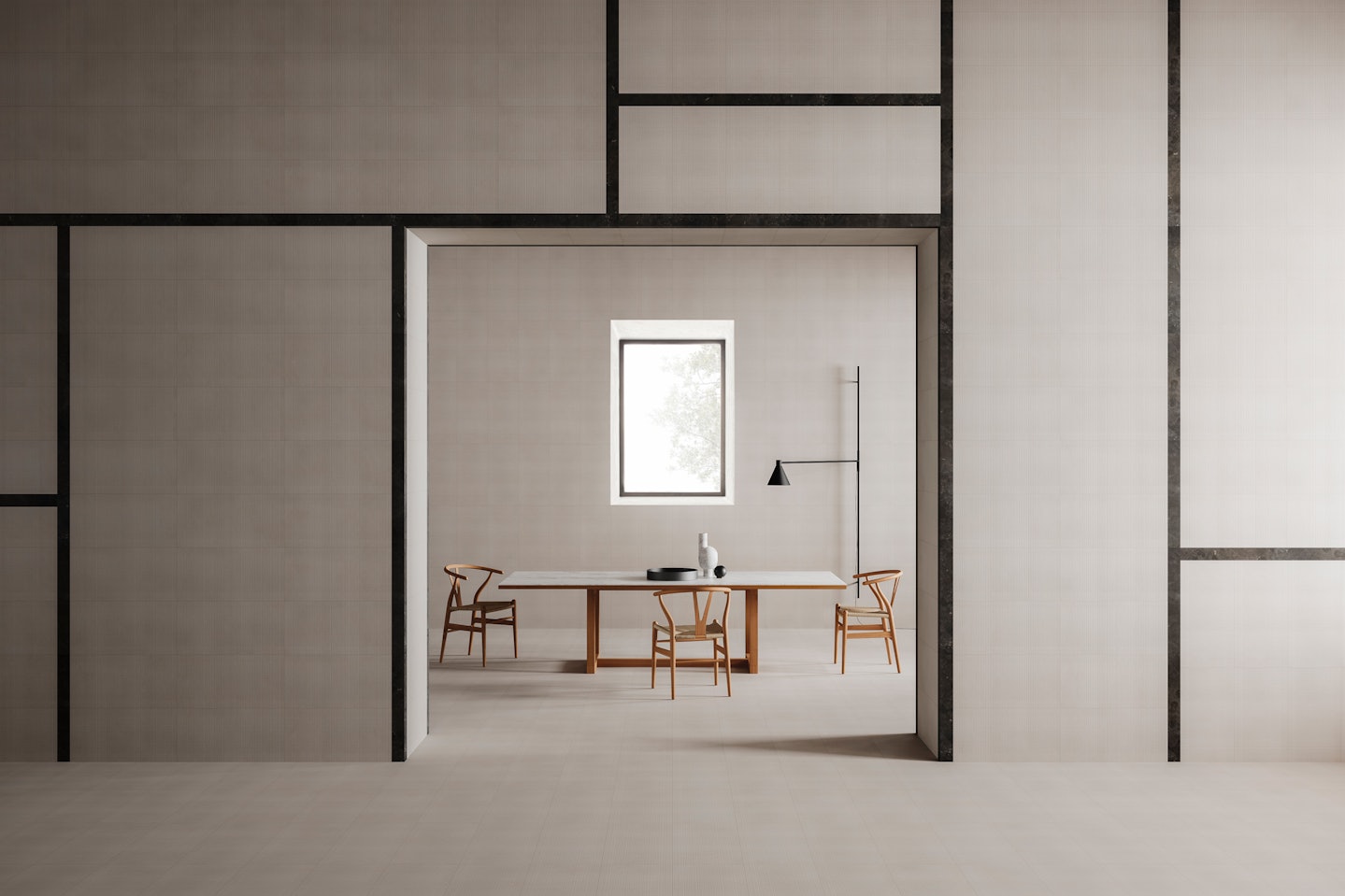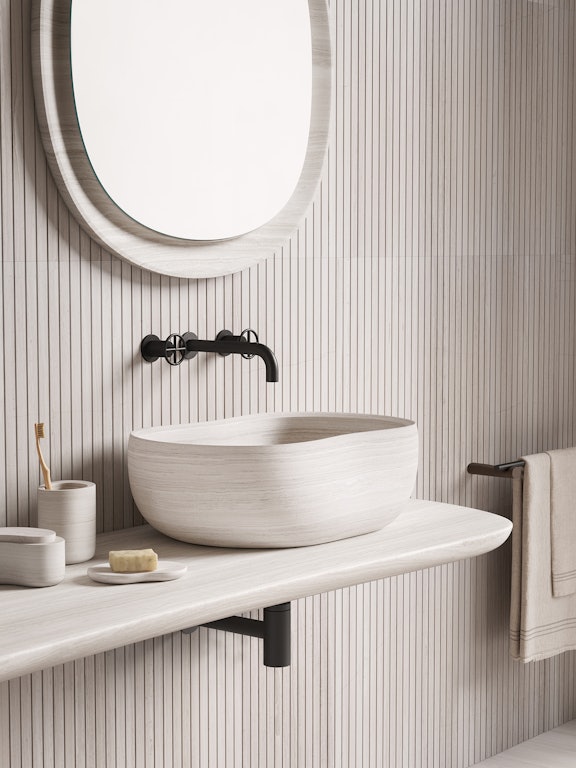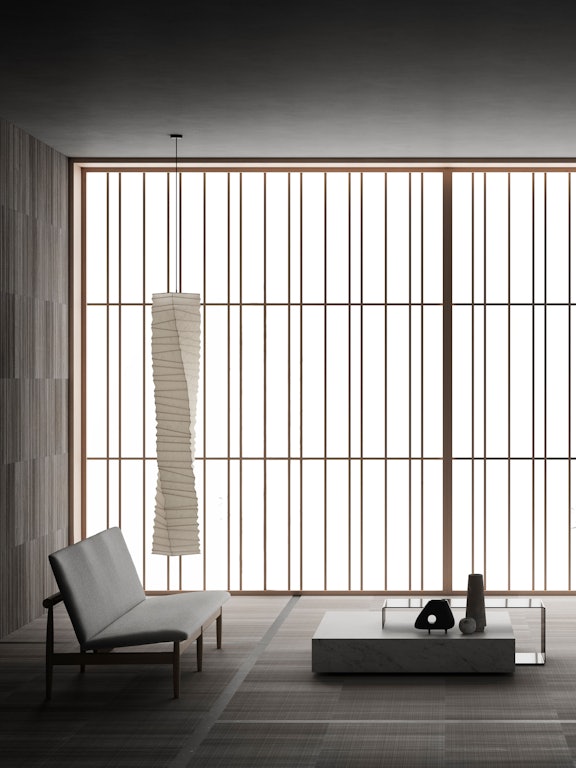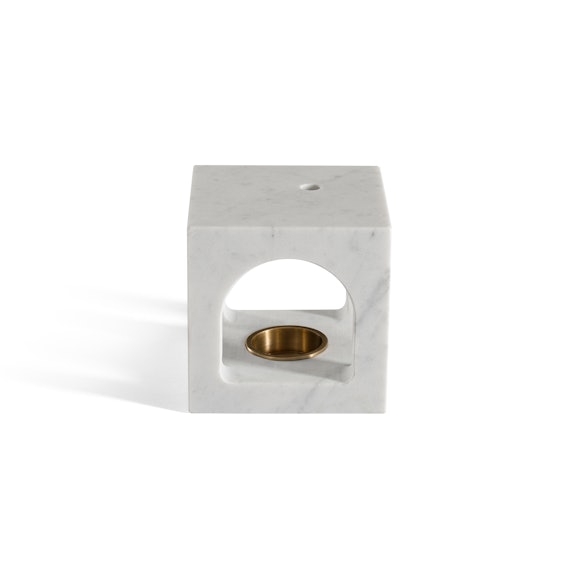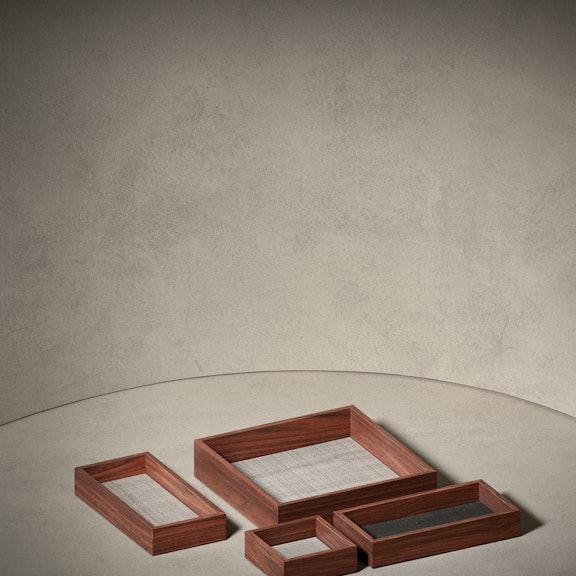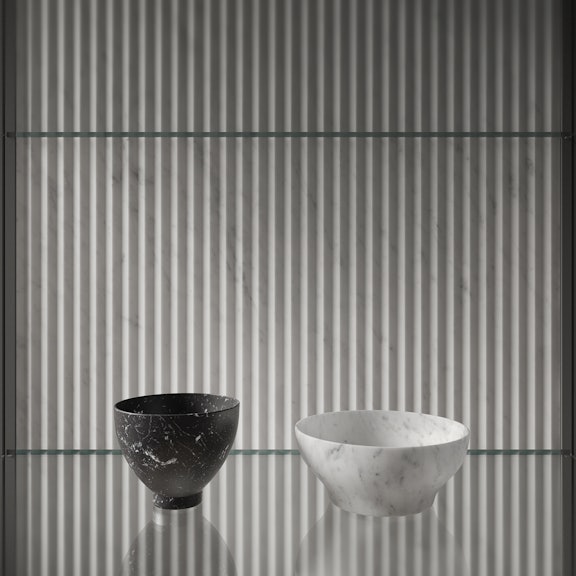Italy meets the Orient: how Japanese design influences the Salvatori approach
03.2023
The art of Japanese minimalist interior design is the perfect fusion of aesthetics and simplicity. Discover the secrets to reproducing it in your own home
The pure, pared-back style of Japanese design is a perfect fit for the Salvatori ethos
Art and philosophy come together to transmit a sense of calm and tranquillity in any space. Japanese-style interior design is revered for its minimal aesthetic, capacity to elevate the beauty of simplicity and the use of natural materials.
However, there is more to it than these three things, important as they are. Japanese design is a tradition, a way of thinking that aspires to striking that perfect combination of purity and elegance in order to create a soothing, welcoming atmosphere.
It is an approach that goes to the essence of things and can be seen in the collections of Piero Lissoni and Kengo Kuma, two renowned designers who have made embraced minimalism and incorporated it into much of their work.
The Japanese Collection, Stone Tatami texture and the Ishiburo Collection are each a homage to the traditions of the Land of the Rising Sun, focusing on neutral colour palette, clean lines and natural materials.
We take a look at what makes Japanese interior design so special, delve a little into its minimalist philosophy and see how it works across different spaces in a home. And of course, we’ll share some ideas of products that represent its ethereal, soothing charm.
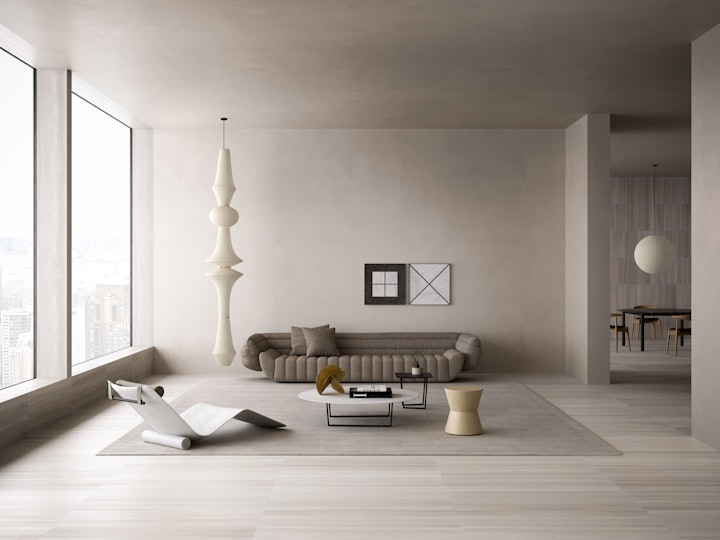
Principles of Japanese design
Japanese style has long been associated with painstaking attention to detail and craftsmanship. Every single aspect is carefully considered and executed with absolute precision, and this ensures that modern Japanese living rooms have a unique, elegant look and feel.
Also known as “Kanso”, the style is a surprising blend between an age-old aesthetic and modern simplicity. Its origins lie in the principle of zen, which refers not only to the concept tranquillity, but also reflects the entire Japanese way of life. It covers three areas in particular:
- Use of natural elements
- A thoughtful approach to space
- Neutral colours
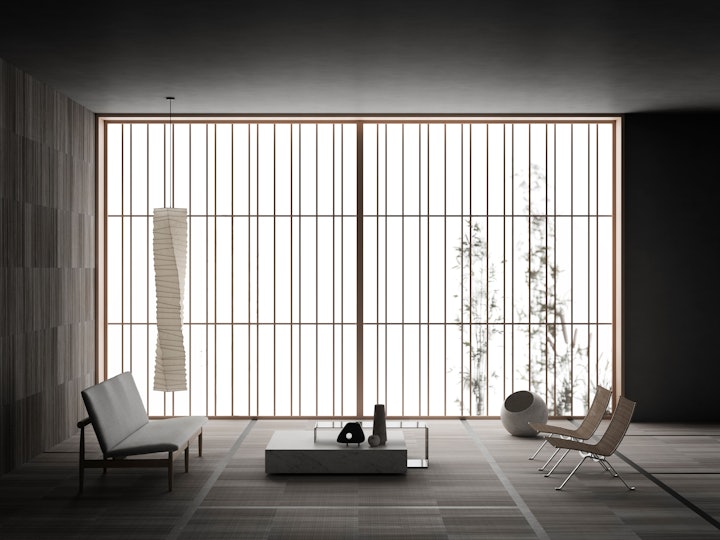
Natural elements
The principles of zen are applied in the field of interior design to create calm, harmonious spaces. The focus is on striking a balance between nature and what humankind has created, and this is achieved through the use of natural materials and elements, a minimalist style and neutral colours.
For example, if we look at a modern Japanese-style living room, we can expect to find oversize windows to allow natural light to flood in. On this note, light is considered in Japanese design, to symbolise purity and spiritual illumination and so it is little surprise that rooms that follow its principles will inevitably transmit harmony and balance.
Other elements that are often incorporated into the décor are plants, flowers and water features and these serve to create continuity and cohesion between outdoors and indoors, as well as reflecting the important role nature plays in Japanese culture. Entering a Japanese home, you will often hear the murmur of water in the background, which makes you immediately feel relaxed and serene.
.jpg?fp-x=0.5&fp-y=0.5&auto=format&w=720&h=540&fm=jpeg&q=70&fit=crop)
A thoughtful approach to space
Another key element of Japanese aesthetics, and this is something we at Salvatori are big fans of, is the use of negative space, or in other words, a contrast of solidity and voids, which creates a pared-back, elegant effect.
Our products are often developed with the thought that they will be positioned in spacious areas, where there is plenty of room around them to allow them to “breathe”. This is particularly relevant for larger pieces such as tables and bookcases.
It’s not about cramming every available surface, but instead, creating artistic mises-en-scène by artfully placing smaller objects such as frames, designer bookends and candle holders around a room. And, for a Japanese-style living room, there are of course our bowls from the Japanese Collection, which would be perfect interspersed with coffee table books and magazines with an Oriental theme. This trio of exquisite accessories was designed by Piero Lissoni as a homage to the ancient Japanese art of porcelain, reinterpreted in stone that has been honed to create a touch of delicate luxury.
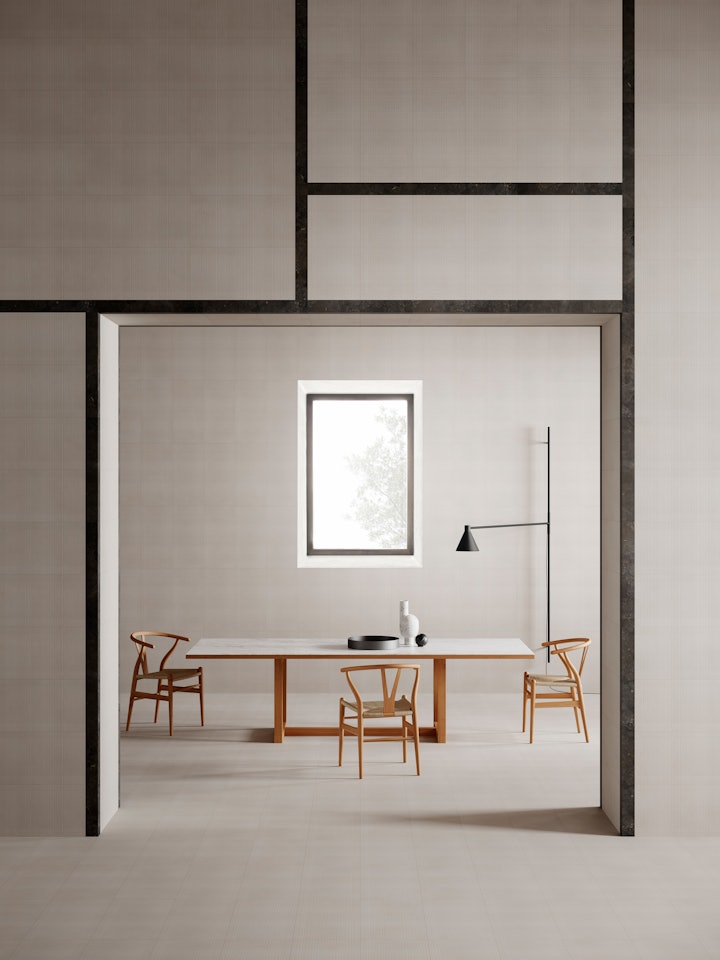
Neutral colours
One final key characteristic of a modern Japanese-style living room is the use of neutral colours such as white, beige, light brown and pearl grey, which create a soft, clean background.
Black is often introduced to define shapes and inject a harmonious accent. Red, representing the sun, is often found in smaller details. Colours such as blue, green and pink may be used less often, but they play a role in terms of their symbolic power. For example, blue is associated with water, while green represents nature.
At Salvatori, we are fervent believers in the power of colour. Every stone is its own fascinating world of different hues, created by Mother Nature over thousands of years and resulting in the myriad of unique patterns and colours that we find in every block, slab, tile and product.
By combining stones with opposing or complementary tones, we can achieve elegant contrasts that can be seamlessly inserted into any space or context. For example, Piero Lissoni’s Stone Tatami pairs textured tiles in Crema d’Orcia with borders in dark brown Pietra d’Avola to create a refined pattern that has clear Oriental influences.
.jpg?fp-x=0.5&fp-y=0.5&auto=format&w=720&h=540&fm=jpeg&q=70&fit=crop)
Examples of Japanese-inspired Salvatori products
Japanese interior design minimalism is a form of art in the way it manages to bring out the inherent beauty of a space, an object or an item of furniture. Its pared-back aesthetic is synonymous with good taste and sophistication.
Its roots lie in the spirituality and rich, age-old traditions of the Japanese culture, where simplicity is treasured and considered a sign of style and class. It derives from the Zen philosophy which places importance on living in harmony with nature and finding beauty in the simplest things.
This timeless style has come back into vogue in recent years and proven extremely popular with designers and clients seeking a serene, practical environment. By focusing on the essentials and using neutral colours and natural materials, minimalist design is the perfect way to create a sanctuary that keeps the frenetic pace of daily life far away.
As we’ve already mentioned, minimalism strips back décor to a minimum, allowing us to concentrate on what is truly necessary. It is based on the functionality and aesthetic of objects, and seeks to enhance them, often by using sought-after materials and innovative technology.
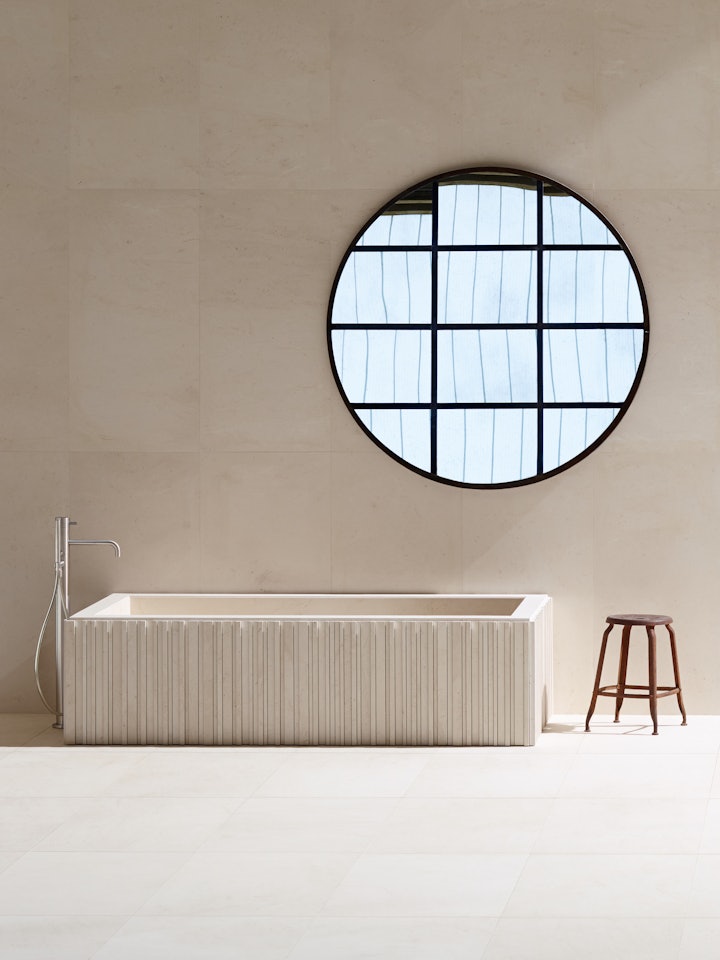
Given that minimalism lies at the heart of Japanese interior design, it goes hand in hand with the modern living room approach we have just looked at. Neutral colours, clean lines, use of negative space and natural materials are all components that work together to lend a sense of harmony and understated sophistication to any room.
Elegance and a timeless aesthetic are a recurrent theme in Salvatori’s collections. Our approach is based on showcasing the purity of an object and celebrating the beauty of imperfections. Our style is contemporary and pared-back, without unnecessary frills and flourishes. This comes to the fore even more so in our collaborations with architects and designers such as Kengo Kuma, a master of the Japanese minimalist philosophy.
You only need to look at the basin and bathtub in his Ishiburo collection to see this, where he explains that “I aspired to maximise the inherent material quality of stone. Being immersed in warm water contained within stone brings instinctive comfort to human beings”. The result is a set of bathroom pieces that evoke a wonderful soothing sensation, while the neutral palette of Bianco Carrara, Crema d’Orcia, Pietra d’Avola and Silk Georgette® used reflect the typical colours associated with Japanese interior design.
To sum up, the essence and philosophy of Japanese design can be clearly seen in Salvatori products and is something that will continue to shape our approach as we develop timeless objects that create a sense of purity and understated luxury. We are ardent fans of the principles of Japanese design, particularly when it comes to minimalism, natural materials and showcasing the essence of objects in order to create inviting, stylish spaces.
